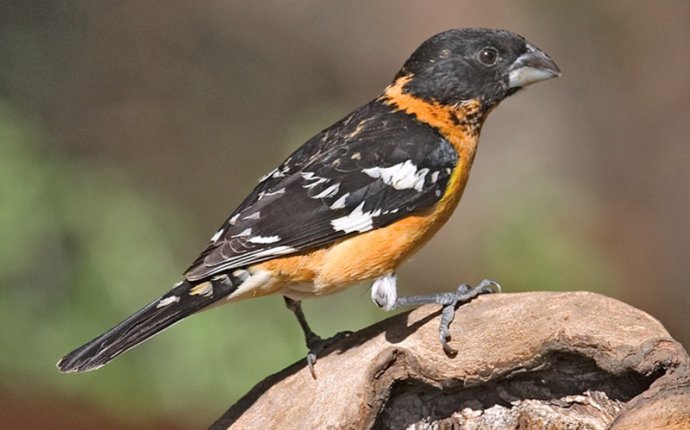
Birds white Breast black head
Only four species of Nuthatch have as yet been observed within the limits of the United States. My opinion however is, that at least two more will be discovered:-one larger than any of those known, in the high wooded plains bordering the Pacific Ocean; the other, of nearly the size of the present species, towards the boundary line of Texas and the United States.
Although the species now under consideration is found in all parts of our extensive country, it is yet the least numerous; there being to appearance more than three of the Brown-headed, and two of the Red-bellied, for every one of the White-breasted. It is an inhabitant of the forest and the orchard, frequently approaching to the very doors of the farm-houses during winter, when it is not unusually seen tapping at the eaves beneath the roof, thrusting itself into barns and houses, or searching for food among the poultry on the ground, where it moves prettily by short hops. During summer it gives a preference to the interior of the forest, and lives in a retired and secluded manner, especially during the breeding season. Although a lively bird, its actions are less animated, and it exhibits less petulance and restlessness than the other species. It moves alertly, however, when searching for food, climbing or retrograding downwards or sidewise, with cheerfulness and a degree of liveliness, which distinguish it at once from other birds. Now and then it has a quaint look, if I may so speak, while watching the observer, clinging to the bark head downward, and perhaps only a few feet distant from him whom it well knows to be its enemy, or at least not its friend, for many farmers, not distinguishing between it and the Sap-sucker, (Picus pubescens, ) shoot at it, as if assured that they are doing a commendable action.
During the breeding season, the affection which this bird ordinarily shews to its species, is greatly increased. Two of them may be seen busily engaged in excavating a hole for their nest in the decayed portion of the trunk or branch of a tree, all the time congratulating each other in the tenderest manner. The male, ever conspicuous on such occasions, works in earnest, and carries off the slender chips, chiselled by the female. He struts around her, peeps into the hole, chirrups at intervals, or hovers about her on the wing. While she is sitting on her eggs, he seldom absents himself many moments; now with a full bill he feeds her, now returns to be assured that her time is pleasantly spent.
When the young come from the egg, they are fed with unremitting care. They now issue from their wooden eave, and gently creep around its aperture. There, while the genial rays of the summer's sun give vigour to their tender bodies, and enrich their expanding plumage, the parents, faithful guardians to the last, teach them how to fly, to ascend the tree with care, and at length to provide for their own wants. Ah! where are the moments which I have passed, in the fulness of ecstacy, contemplating the progress of these amiable creatures! Alas! they are gone, those summer days of hope and joy are fled, and the clouds of life's winter are mustering in their gloomy array.









